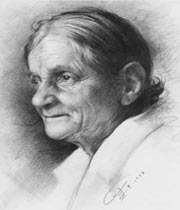The Iranian Art of Painting
part 2
Artists of the Baghdad school, after years of stagnancy, were eager to create and innovate. The particular views of this school, is in drawing animals and illustrating stories.
Although the Baghdad school, considering the pre- Islamic art, is to some extent, superficial and primitive, but the art of Iranian miniature, in the same period, was widespread in every region in which, Islam was propagated: Far East, Africa and Europe.
Among illustrated books in the Baghdad style, "Kelileh and Demneh" can be named. Images are painted larger than normal and are not proportional. Only few colors are used in these paintings. Most of the handwritten books of the 13th century are enriched with images of animals, vegetables and illustrations from fables and stories.
There remains two valuable illustrated books from the reign of Baisongor. One, being the Kelileh and Demneh and the other, Baisongor"s Shahnameh (epic of kings). In the drawings of Shahnameh, painted in 1444 AD in Shiraz, interesting examples of Iranian miniature art can be seen. One of these drawings represents a beautiful scene from an Iranian court, painted in the Chinese style. White and blue tiles and Persian carpets are drawn in geometrical shapes.
In one of the manuscripts of the book of "Khamseh Nezami", exist 13 excellent miniatures, drawn by Mirak, the famous painter and calligrapher. The sensitive and artistic spirit of Baghdad"s paintings are represented in the drawings of another volume among the works of Khamseh Nezami. This precious work is preserved in "British Museum". One of the liveliest paintings of this book, shows the construction of Jozanag palace. In this painting, masters and architects are busy building the palace. This miniature was painted in 1494 in Herat.
Behzad, the greatest painter of the Herat School, expanded the delicate art of miniature. He invented new patterns for natural facts and portraitist which did not exist before his time. One of the masterpieces of the Iranian art of painting is an illustrated book of Shahnameh, preserved in the library of Golestan palace in Tehran. This Shahnameh was also illustrated under Baisongor, the Timourian prince, and belongs to the Herat School. The paintings of this book, from the view point of coloration and proportion of the components in the images are at the highest degree of beauty and firmness.

During the Safavid era, the artistic center was moved to Tabriz. A few artists also settled in Qazvin. But the Safavid School of painting was established in Esfahan. The miniature of Iran, in the Esfahan of Safavid era, was detached from the influence of the Chinese out and stepped on a new road. The painters were then more inclined towards naturalism. Reza Abassi, founded the "Safavi School of painting". The art of design during the Savafids subjected to a brilliant transformation. The design, which is one of the most elegant Iranian designs, was made possible by the talent of the artists of the Safavid School. Miniatures created under the Safavi School, were not exclusively aimed for adorning and illustrating books. The Safavi style is softer in form than those of the Timourid School, specially the Mongolian.
Human images and their behavior are not vain and artificial, in the contrary quiet natural, and close to reality. Safavid painters also manifested a special expertness in humeral paintings.
The most magnificent example of the paintings of this period exists in the palaces of "Chehel Sotoun" and "Ali Qapoo". In Safavid paintings, the splendor and the grandeur of this period is the main attraction. The themes of the paintings are about the life in the royal court, the nobles, beautiful palaces, pleasant goodness, scenes of battles and banquets. Humans are drawn in sumptuous garments, handsome faces and elegant statues colors are glowingly bright.
The art of painting, during the Safavid era expanded both in quantity and quality. In the works of this period, a greater freedom, skill, and power can be seen.
The Iranian paintings, through their richness, offer a special joy unlike anything else. They keep a vast connection with the epic stories. In Iranian paintings, the nude body of a human is not a way of expression. Iranian painting is considered as one of the greatest schools of Asia. Splendor and luminosity have not been better expressed in any other culture. Bright skies, astonishing beauty of spring blossoms, and among them, humans with splendid garments who hate and love, are jovial or melancholic, form the general themes of the Iranian painting.
Source: iranchamber.com
Other Links:
Poetry in Persian
The Persian Language (Part 1)
The Persian Language (Part 2)